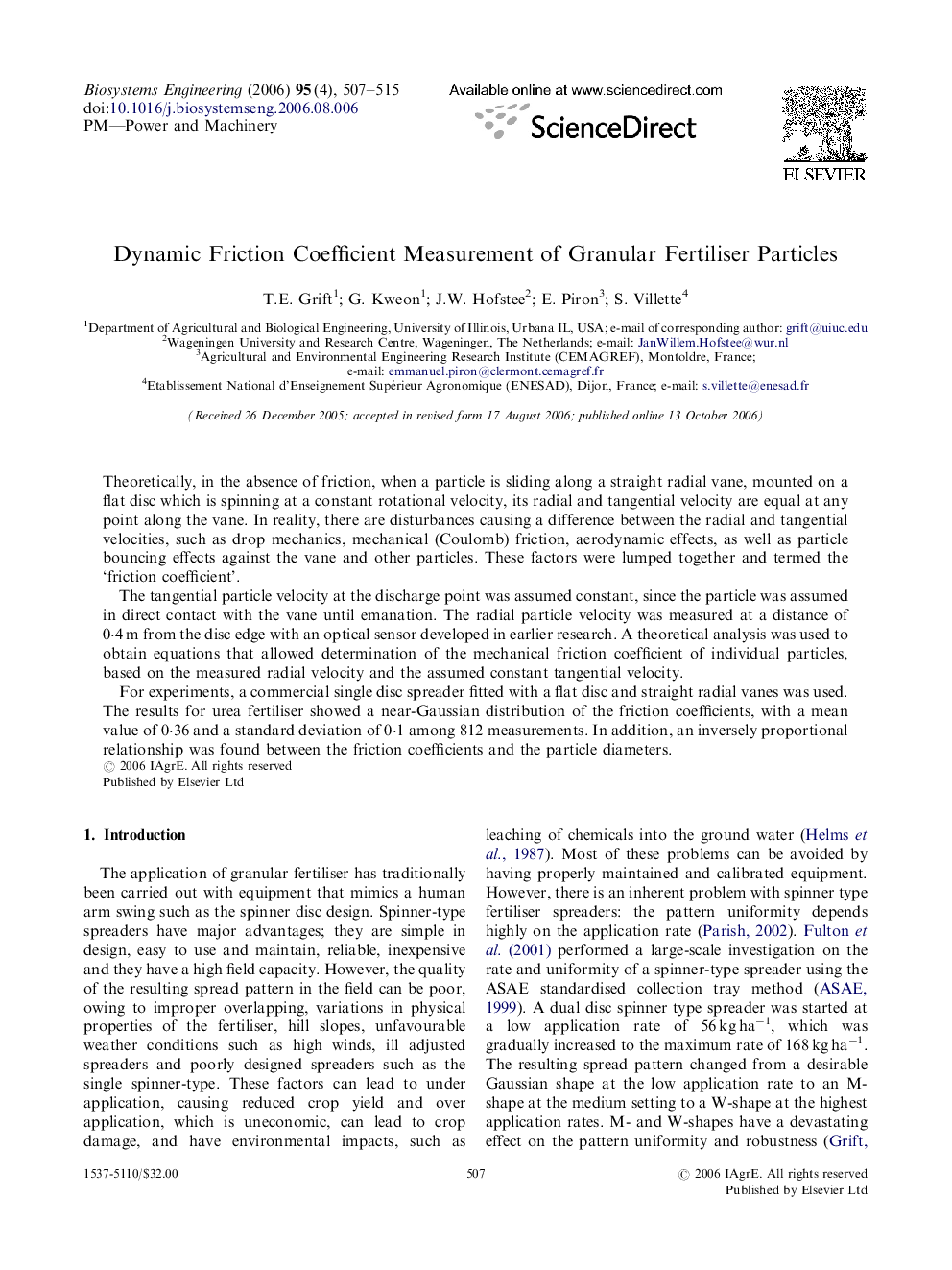| Article ID | Journal | Published Year | Pages | File Type |
|---|---|---|---|---|
| 1712794 | Biosystems Engineering | 2006 | 9 Pages |
Theoretically, in the absence of friction, when a particle is sliding along a straight radial vane, mounted on a flat disc which is spinning at a constant rotational velocity, its radial and tangential velocity are equal at any point along the vane. In reality, there are disturbances causing a difference between the radial and tangential velocities, such as drop mechanics, mechanical (Coulomb) friction, aerodynamic effects, as well as particle bouncing effects against the vane and other particles. These factors were lumped together and termed the ‘friction coefficient’.The tangential particle velocity at the discharge point was assumed constant, since the particle was assumed in direct contact with the vane until emanation. The radial particle velocity was measured at a distance of 0·4 m from the disc edge with an optical sensor developed in earlier research. A theoretical analysis was used to obtain equations that allowed determination of the mechanical friction coefficient of individual particles, based on the measured radial velocity and the assumed constant tangential velocity.For experiments, a commercial single disc spreader fitted with a flat disc and straight radial vanes was used. The results for urea fertiliser showed a near-Gaussian distribution of the friction coefficients, with a mean value of 0·36 and a standard deviation of 0·1 among 812 measurements. In addition, an inversely proportional relationship was found between the friction coefficients and the particle diameters.
